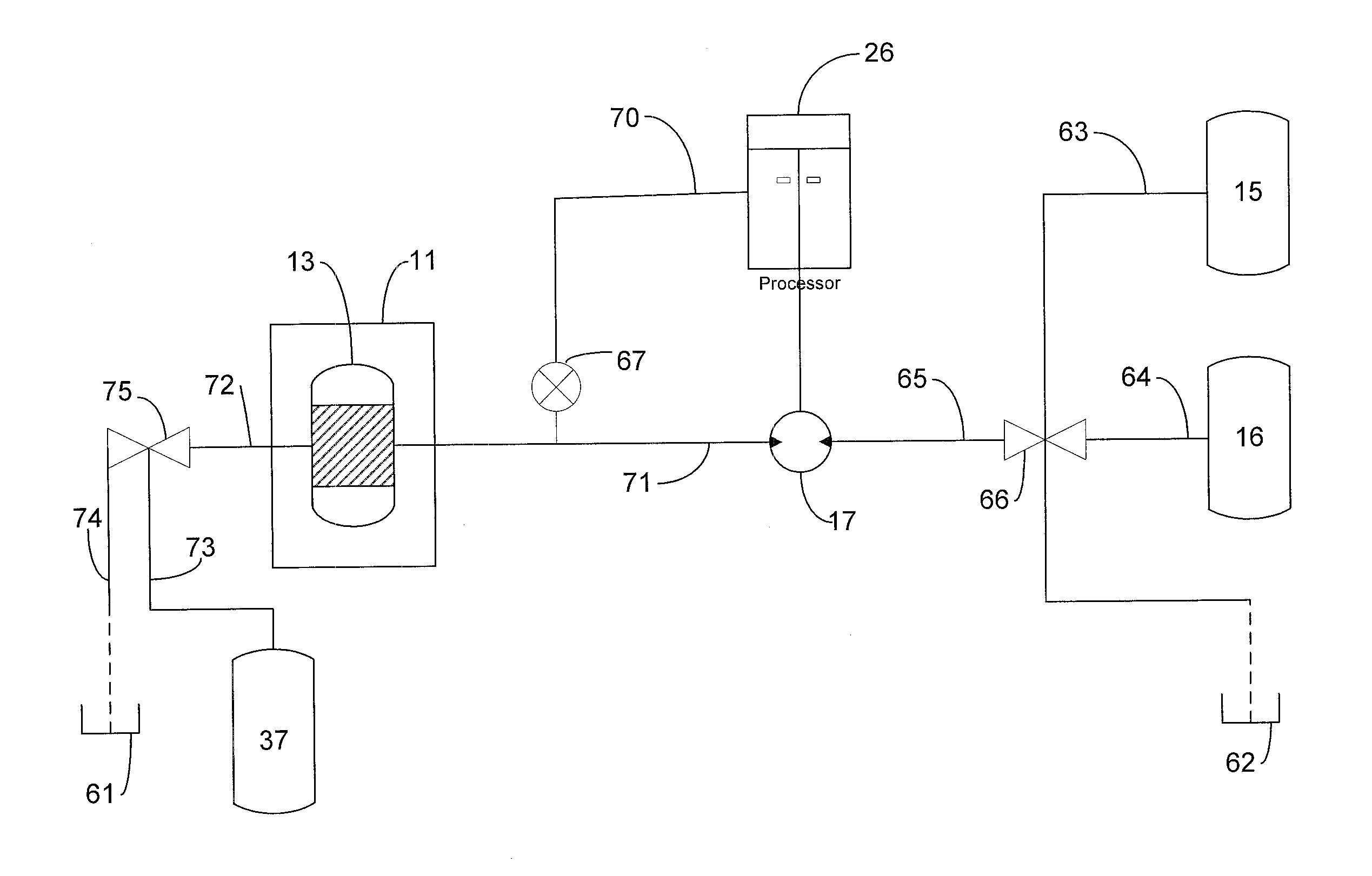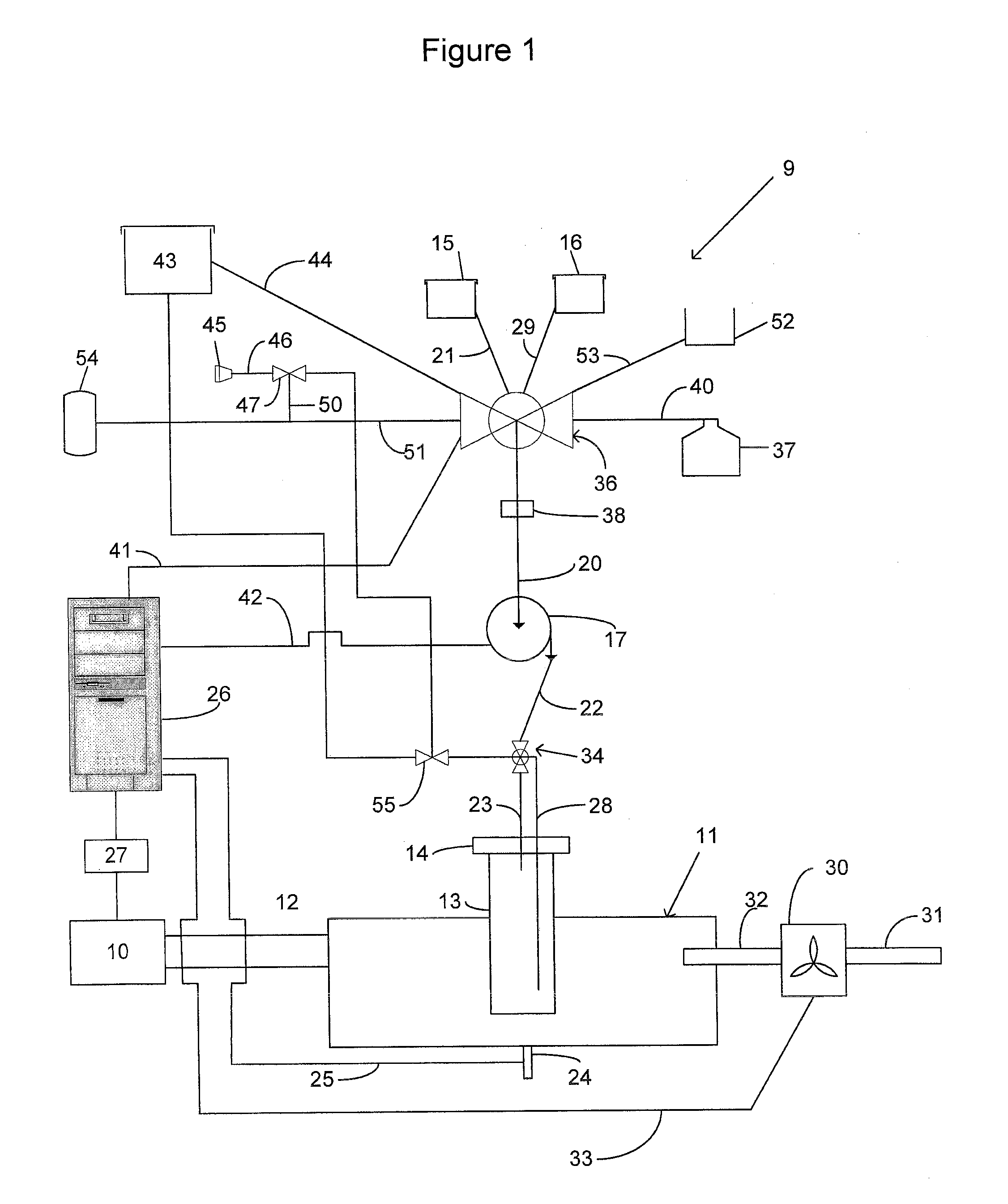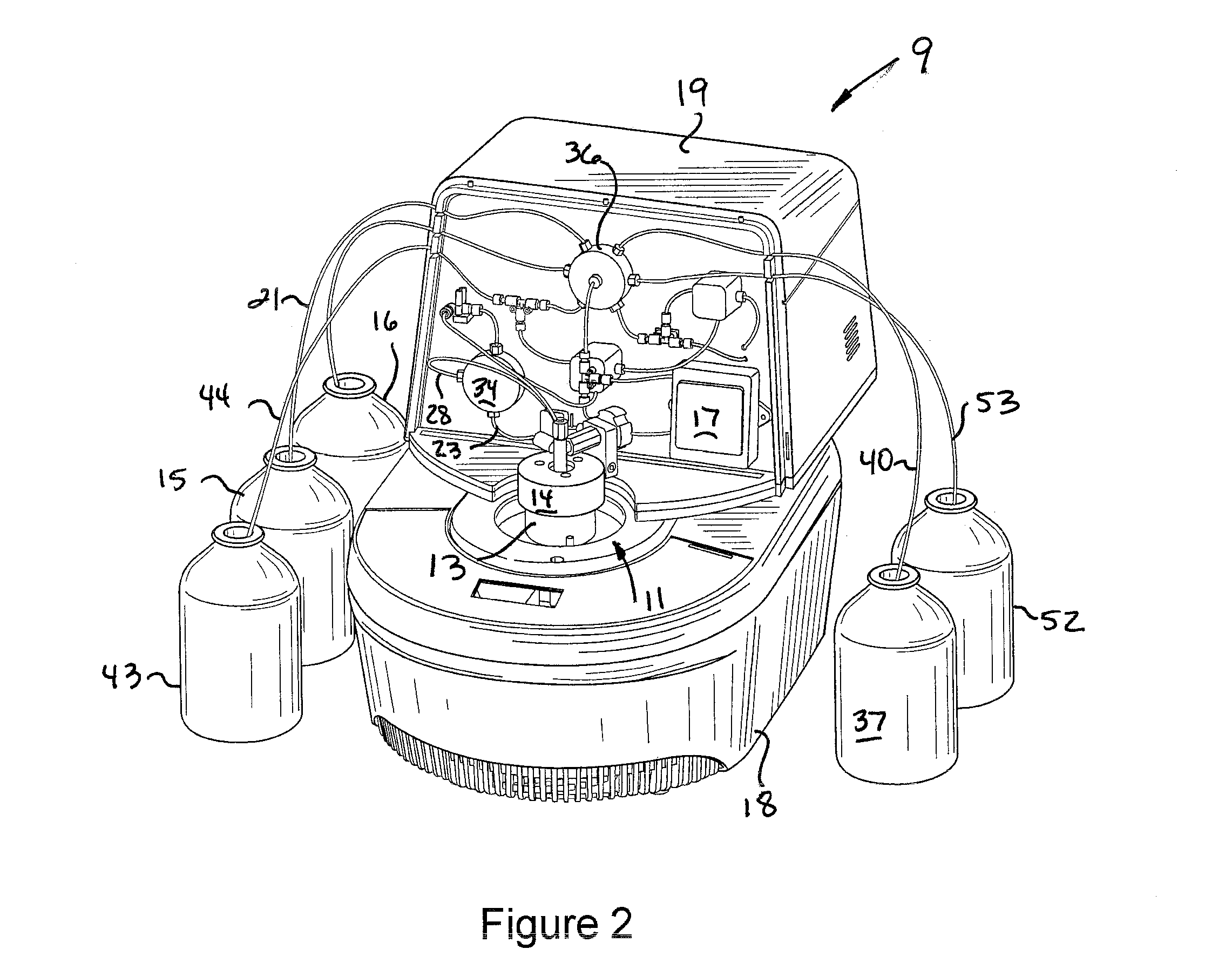Controlled Flow Instrument For Microwave Assisted Chemistry With High Viscosity Liquids And Heterogeneous Mixtures
a flow instrument and microwave technology, applied in the field of microwave assisted chemical synthesis, can solve the problems of system inability to handle heterogeneous starting materials, high pressure and heterogeneous starting materials, and limited time spent in the microwave field, so as to minimize inter-action
- Summary
- Abstract
- Description
- Claims
- Application Information
AI Technical Summary
Benefits of technology
Problems solved by technology
Method used
Image
Examples
Embodiment Construction
[0036]FIG. 1 is a schematic diagram of a controlled-flow microwave instrument for chemical synthesis using heterogeneous or highly viscous starting materials. The instrument comprises a microwave source designated at 10 for generating electromagnetic radiation in the microwave frequencies. A microwave cavity 11 is in wave communication with the source 10 for exposing compositions placed therein to microwave radiation. As illustrated in FIG. 1, the cavity 11 and the source 10 communicate through a waveguide 12. In preferred embodiments, the microwave cavity 10 is a single or dual mode cavity. Single and dual mode cavities are preferred because the value of the microwave field is predetermined at particular positions in the cavity on a consistent and reproducible basis.
[0037] A microwave transparent pressure resistant reaction vessel 13 is positioned (partially or entirely) within the cavity 11. Although it is sufficient for a portion of the vessel 13 to be transparent to microwave r...
PUM
 Login to View More
Login to View More Abstract
Description
Claims
Application Information
 Login to View More
Login to View More - R&D
- Intellectual Property
- Life Sciences
- Materials
- Tech Scout
- Unparalleled Data Quality
- Higher Quality Content
- 60% Fewer Hallucinations
Browse by: Latest US Patents, China's latest patents, Technical Efficacy Thesaurus, Application Domain, Technology Topic, Popular Technical Reports.
© 2025 PatSnap. All rights reserved.Legal|Privacy policy|Modern Slavery Act Transparency Statement|Sitemap|About US| Contact US: help@patsnap.com



